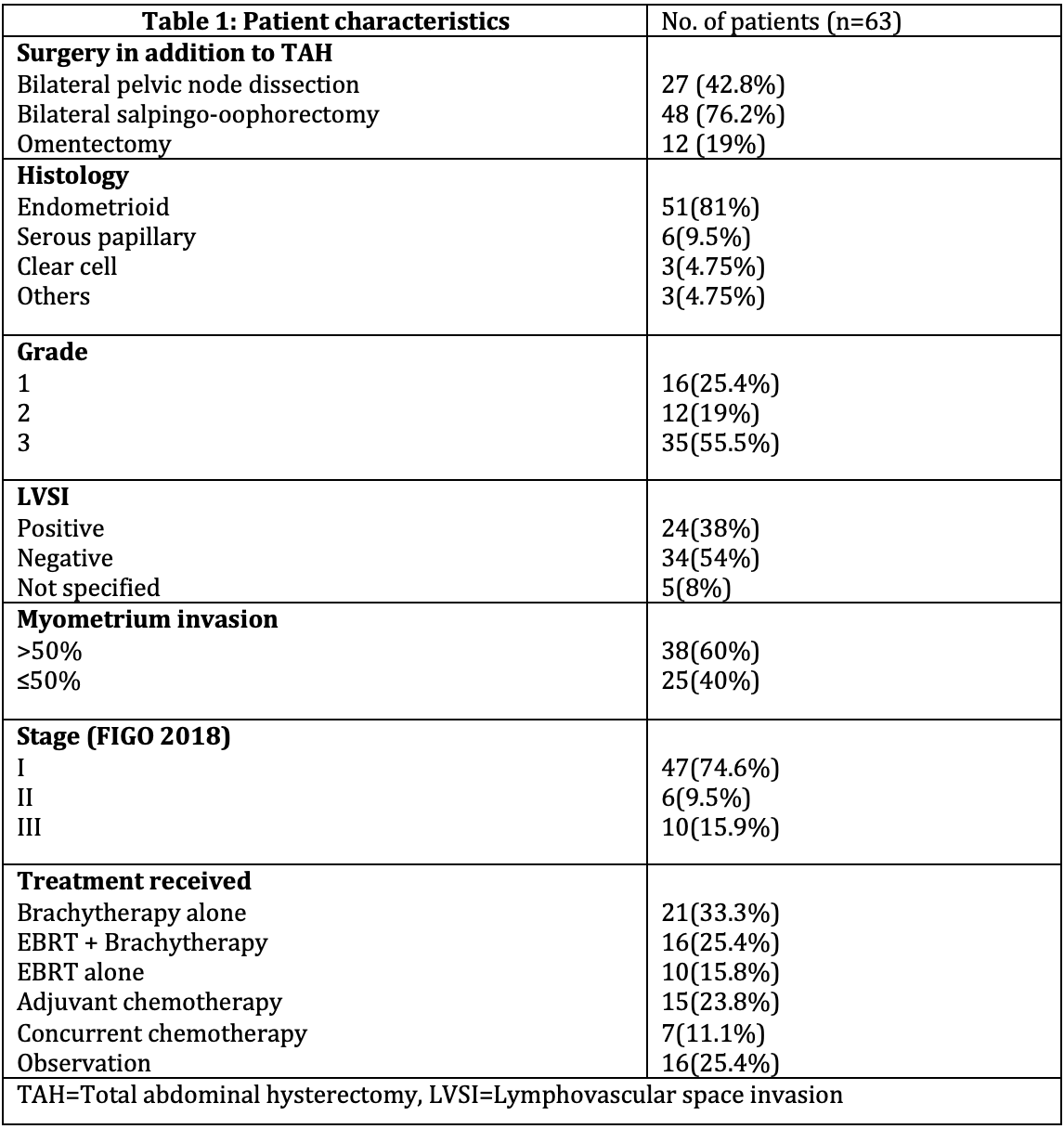Clinical outcome of carcinoma endometrium and impact of histopathological review on management
AJEET KUMAR GANDHI,
India
PO-1336
Abstract
Clinical outcome of carcinoma endometrium and impact of histopathological review on management
Authors: AJEET KUMAR GANDHI1, Rakhi Verma1, Madhup Rastogi1, Rohini Khurana1, Rahat Hadi1, Anoop Srivastava2, Avinav Bharati2, Nuzhat Husain3
1Dr Ram Manohar Lohia Institute of Medical Sciences, Radiation Oncology, Lucknow, India; 2Dr Ram Manohar Lohia Institute of Medical Sciences, Medical Physics, Radiation Oncology, Lucknow, India; 3Dr Ram Manohar Lohia Institute of Medical Sciences, Pathology, Lucknow, India
Show Affiliations
Hide Affiliations
Purpose or Objective
Endometrial Carcinoma (EC) is second most common gynaecological malignancy in India. The role of central histopathological review has been emphasized by the recent PORTEC-3 analysis. We aimed to retrospectively analyse the demographic and histopathological characteristics of EC patients treated at our institute and assess the impact of central histopathological review on management.
Material and Methods
Data of 63 EC patients treated at our centre between 2013-2020 were retrieved from our departmental archives. Patients were analysed for demographic details, histopathological findings, details of surgery and histopathology (HPE), results of review of HPE, adjuvant treatment details and clinical outcome. All patients with HPE outside our institute are routinely reviewed at our center prior to initiation of treatment. In cases of discordance, patients are discussed in the multi-disciplinary tumour board for final treatment decision. Patients were staged as per FIGO (International Federation of Gynaecology and Obstetrics) 2018.Radiotherapy was delivered with 3D-conformal radiotherapy and concurrent chemotherapy was given with cisplatin 50 mg/m2 (Day 1 and 28). Adjuvant chemotherapy consisted of 4 cycles of 3 weekly paclitaxel (175mg/m2) plus carboplatin (AUC 5)
Results
Median age was 57 years (range 30-77). 69.8% had medical co-morbidities. Patient characteristics and treatment details are summarized in table 1. 5 patients had ovarian involvement. Of the biopsy blocks reviewed, changes were observed in 10 patients (16%). HPE review changes were observed in terms of histological grade in 5 patients (50%), histological type in 1 (10%), myometrial invasion in 4 (25%) and lymph node involvement in 2 (20%). HPE review lead to changes in the management of 6 patients for overall cohort (10%).
Median external beam radiotherapy dose was 50 Gray (range 45-50.4 Gray at 1.8-2 Gray per fraction). Median brachytherapy dose for patients treated with brachytherapy alone was 7 Gray each for three sessions and in combination with EBRT was 6 Gray each in 2 sessions. Median number of adjuvant chemotherapy cycles were 4 (range 2-4). At a median follow up of 26 months, 7 (12%) patients developed distant metastasis, 2 (3.2%) patients had local recurrence.
Conclusion
Endometrial carcinoma patients treated at our center have excellent local control rates with multimodality management. Central histopathological review may lead to changes impacting patient management and should be routinely done prior to initiation of treatment in endometrial carcinoma.